Who wants to go back in time for some serious intarsia sock knitting patterns?
No really, if the thought of intarsia turns you off immediately, this post may not be for you. This booklet, published by the Bernat company in 1953, contains mostly sock patterns—all with intarsia patterning on the leg, so they’d have been knit flat—with a handful of other patterns, all geared toward men.
Which makes me wonder—when did knitting for men become equated with a “sweater curse”? (Obviously it’s not really a thing and I mean no disrespect to men, men who knit, or readers who knit for their partners of either sex or any gender-identification; I’m just pondering.) I mentioned this booklet to Julia Farwell-Clay when we were chatting the other day and she mentioned that in her mother’s generation, it was de rigeur to knit socks such as these for one’s beau.
I don’t know that I love anyone enough to knit intarsia socks (maybe me; I would knit some of these for me), but it’s interesting to recognize and ponder on the shifts that have taken place throughout knitting, and in a larger context, Western/North American society in general in the course of 60 years. More on that later. For now, there are socks!
Socks with Escher-esque patterning.
Socks with fancy patterning.
Socks with foxes! (I’m trying so hard to not turn this into a Dr. Seuss post.)
Socks with horses…
Socks with dice.
Socks with …coffee? Beer through a straw? I can’t figure this one out.
Socks with giant geometric shapes that I kind of love.
Socks for golf clubs!
And when you get bored with socks, there’s a vest for a change of pace.
Now for the fun part. I know I’ve talked about this before—comparing the amount of information provided in old patterns versus newer patterns. Why is there such a disconnect between sparse, pared down pattern-writing of old and the trend/”necessity” today to spell out every. last. detail? I’m not judging anyone, knitters or pattern writers, but allow me to show you what passed for a charted pattern in 1953.
A hand-drawn chart for colorwork socks. Note the symbols in place of colors, as there wasn’t much if any color printing, oh and also the fact that it’s HAND DRAWN.
And when you were ready to knit the other sock?
And the instructions for the socks on the pages only included instructions for working the leg. Knitters were then told to turn to the last page of the book and work instructions for either Sock A or Sock B for the heel and foot.
So now I open the floor to discussion of the shift in pattern writing over the last six decades. Knitting certainly declined for part of that time—are we catering to newer knitters without the benefit of passed down knowledge? Are today’s knitters just more fearful in the face of instructions? Is the advent of digital publishing and not worrying about page space on the internet creating a demand for all of the information ever? Share your hypotheses in the comments!
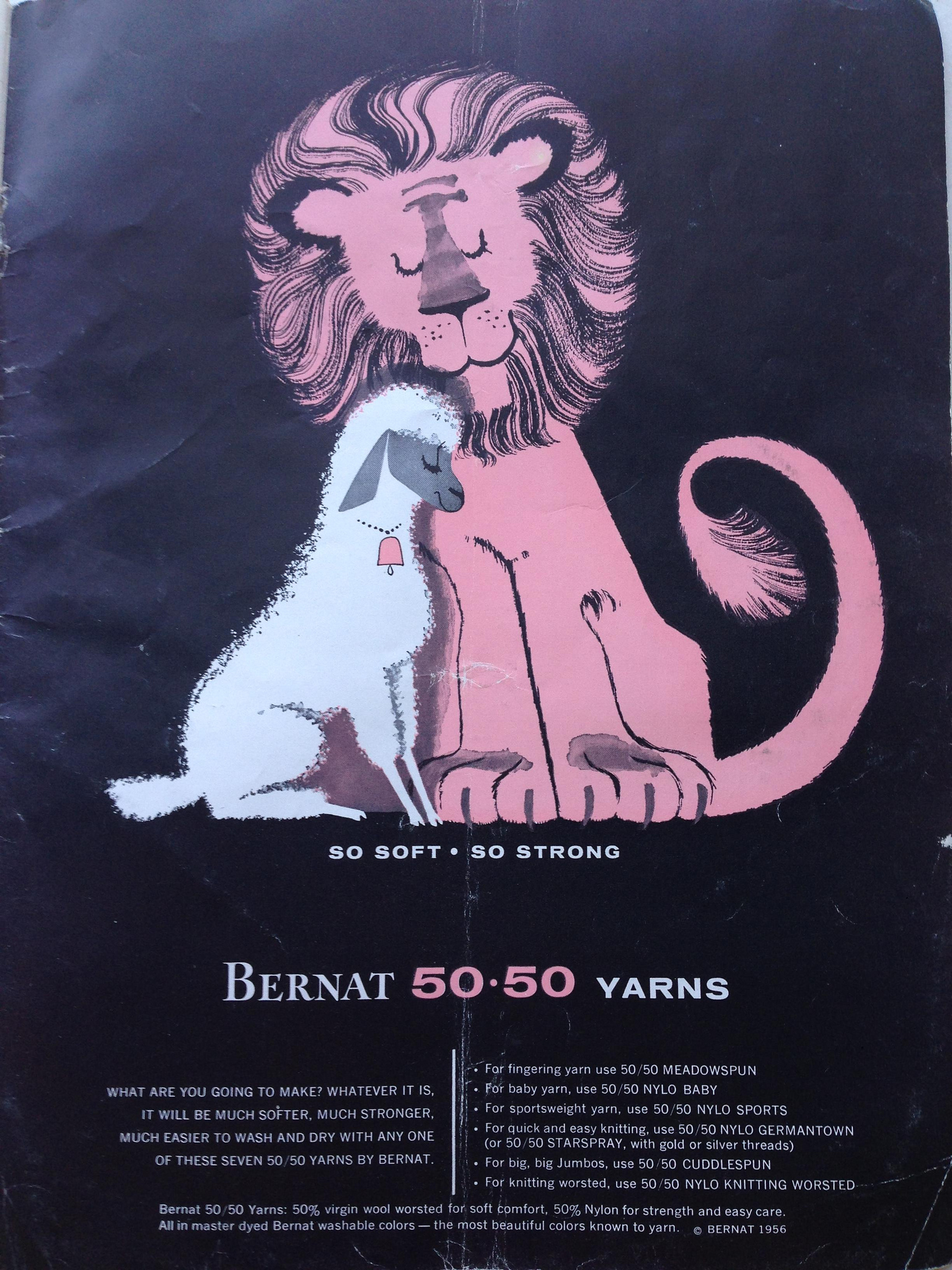
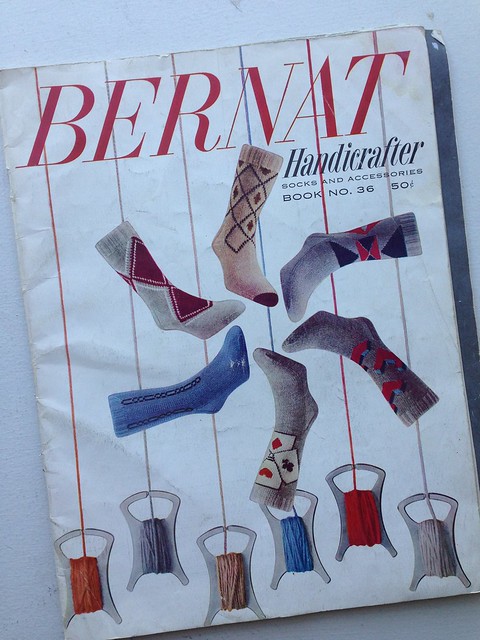
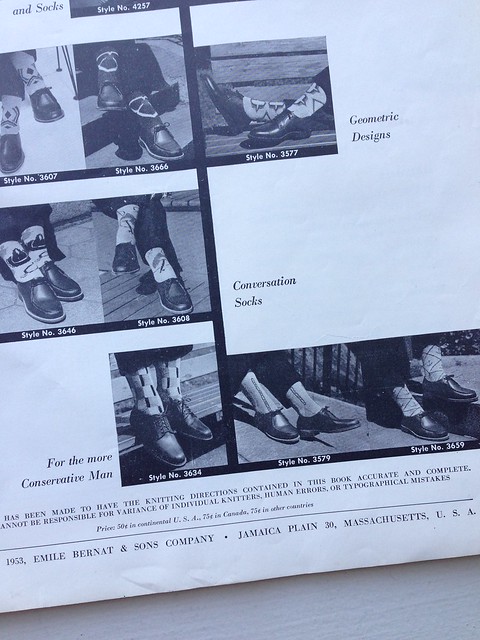
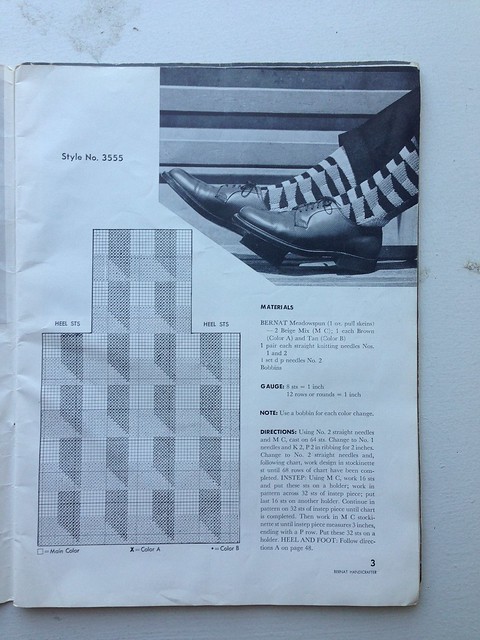
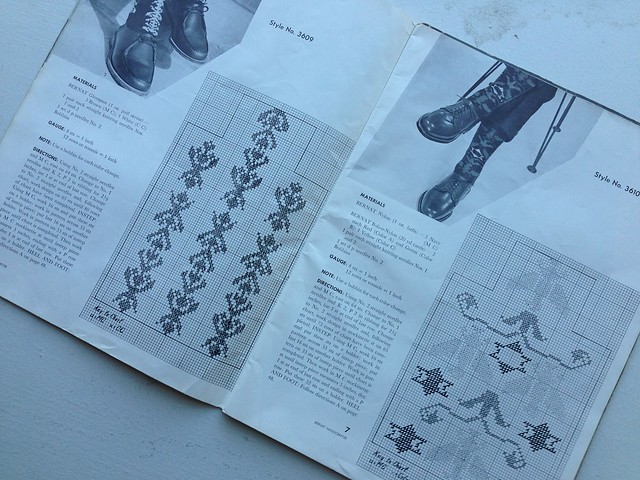
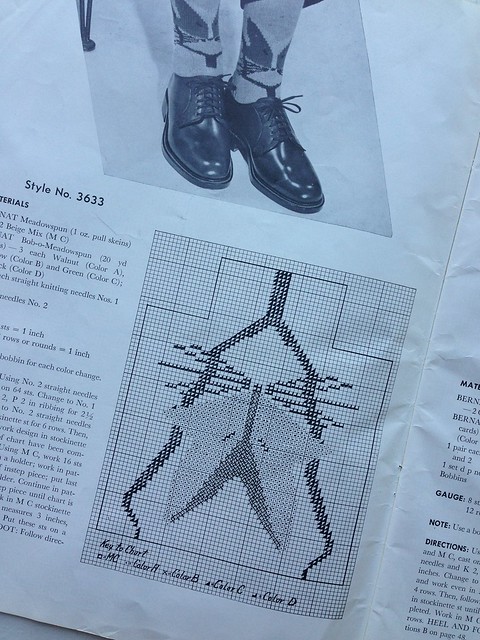
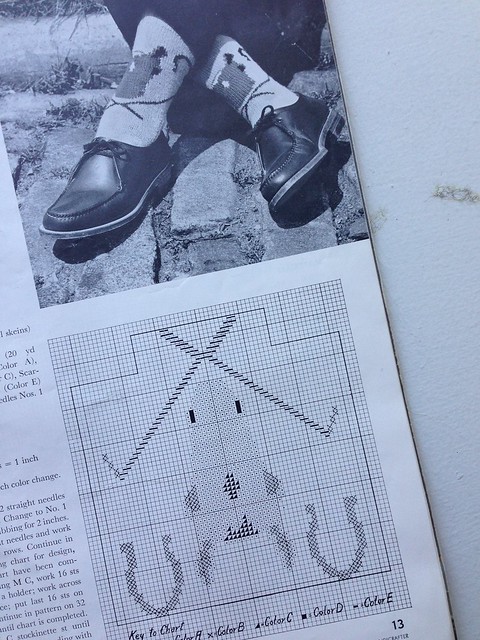
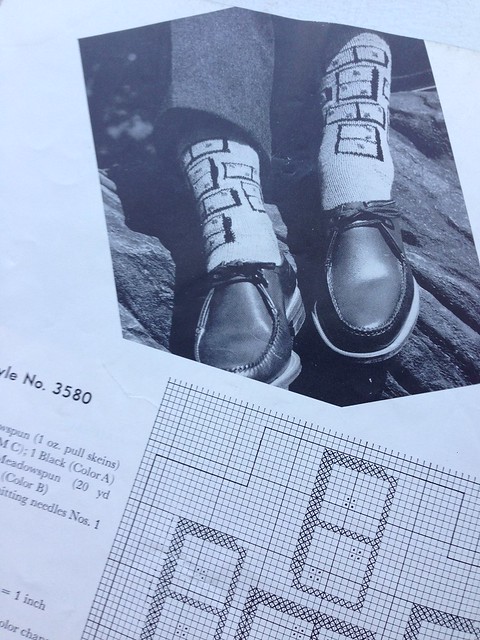
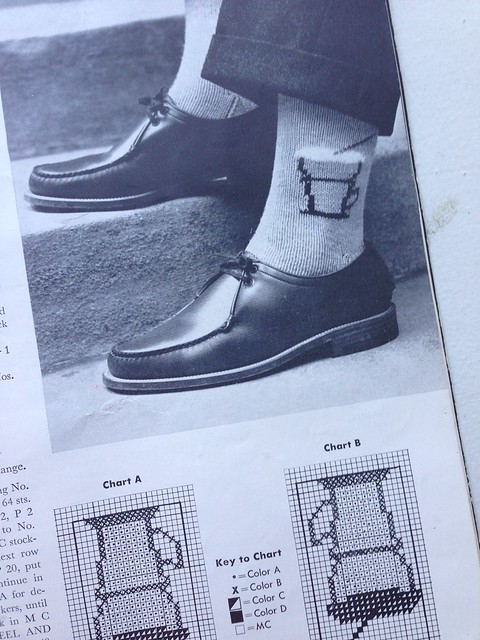

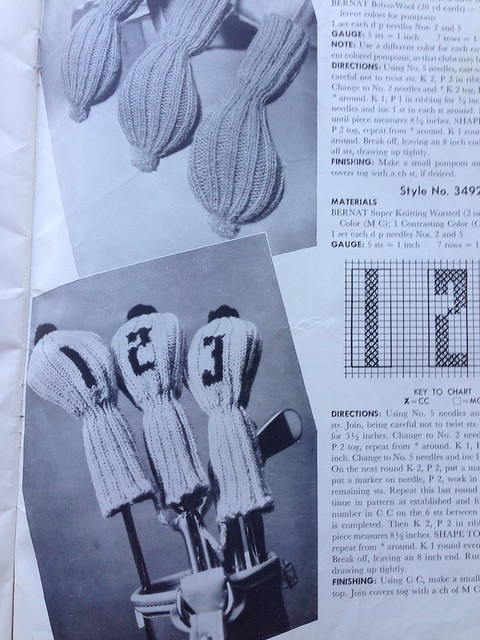
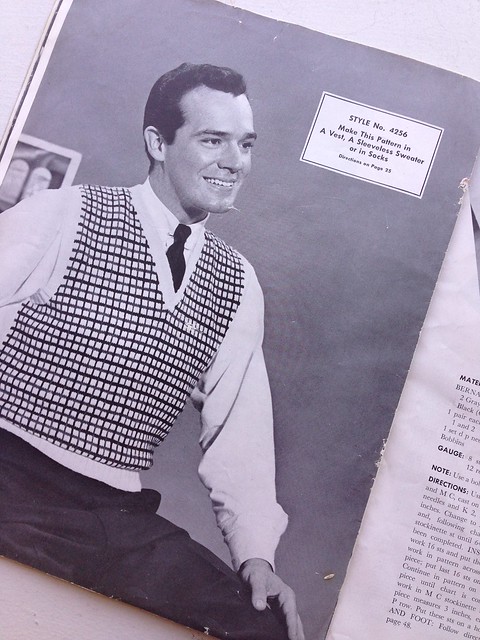
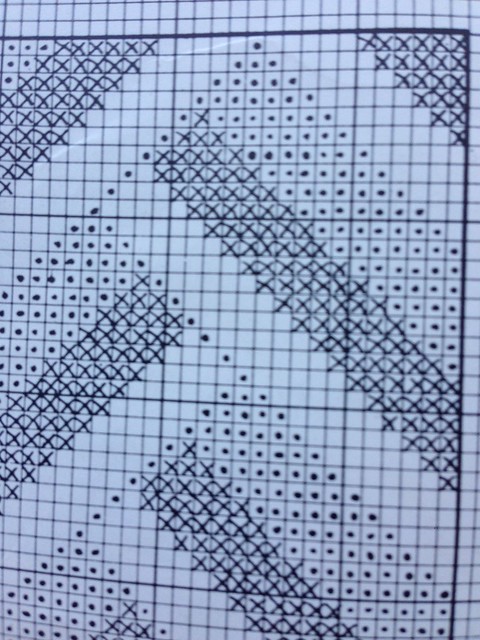
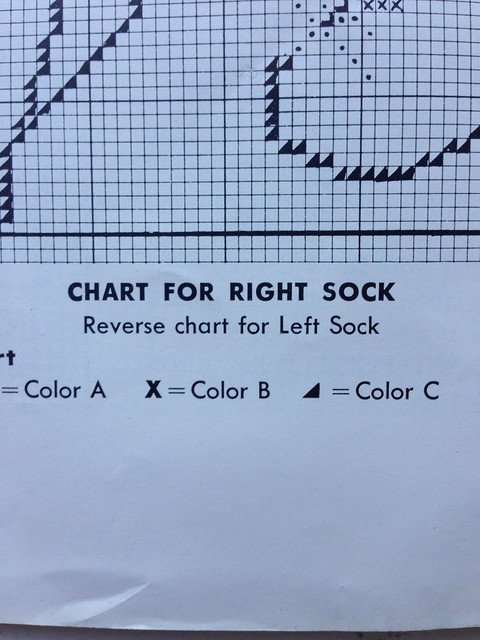
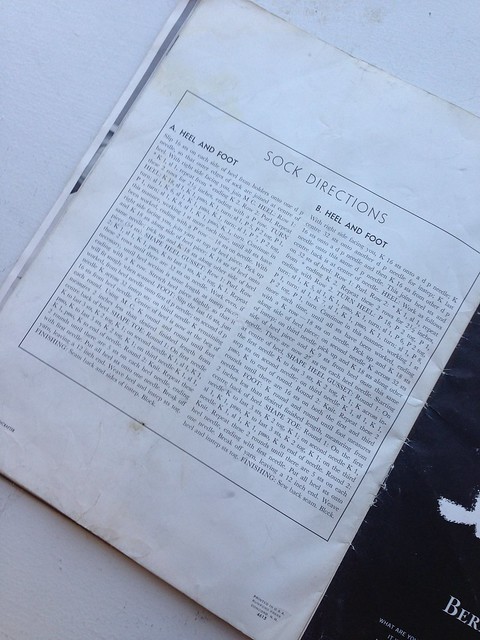

Oh, man. Intarsia socks! I guess I’ve never really given them much thought before and now I clearly need to knit A LOT of them.
As for the pattern writing, I don’t know if I have a general opinion, but I know that as a self-taught knitter I was pretty thankful for all the detail I could get on-line, whether in patterns or tutorials, when I was first learning. Now that I’m a more experienced knitter, I find I tend to just skip the lengthy descriptions if they show up in a pattern I’m interested in rather than avoiding those patterns entirely. I haven’t really found any yet where the detail was so overwhelming that I thought it got in the way. That being said, something like the example you give here I would be totally comfortable knitting because I like charts and I’m pretty familiar with sock construction now, but I never would have been able to handle it when I first started knitting.
I think the beer float socks may, in fact, be soda fountain socks: https://www.etsy.com/listing/179181432/soda-fountain-drinking-glasses-white?ref=market
As for pattern detail, I think you may have something thee with the generational gap. A mid century woman would have made dozens of knitted items by the time she was courting, and probably had a mental tech library. I think it may also have something to do with the value-for-money mentality. I can make a burger at my house for far less than TGIF, so they entice me with endless fries and special sauces. Likewise, pattern makers know that I can buy intarsia beer socks from Sock Guy for $10 (and I cannot laud Sock Guy enough for sports socks), whereas making them is going to take a month, $20 in yarn, and a $5 pattern, so I’m sure many designers want to make the process as easy and attractive as possible. The details are the fries, but you’re experienced enough to see through it and you just want the burger.
Regarding socks for beaus, my mom was in college in the early 1960s. She said all the girls knit argyle socks for their boyfriends, but that they took so long to make that you might start them for one boyfriend but finish them for another. So maybe it was more about the challenge or the love of knitting than the gift?
Gloriane, that sounds like knitting for kids! Start for the first one, finish for the second.